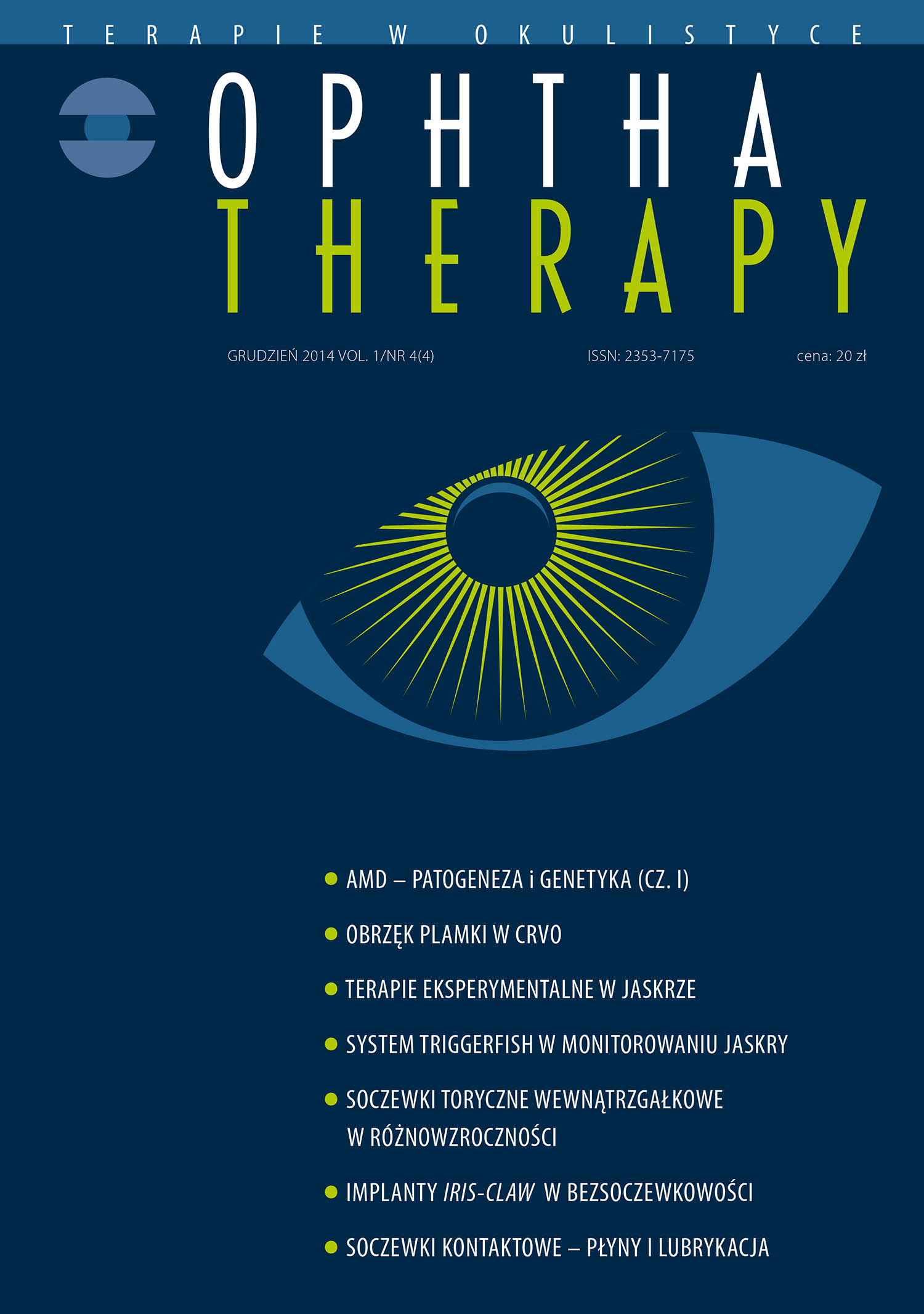Chemical properties of soft contact lens care products
Main Article Content
Abstract
Nowadays, an increasing number of contact lensses users has caused development of soft contact lens care products. The effective disinfection process is a fundamental requirement for soft contact lens care products. The ISO 14729 specifies rules for registration of contact lens care products as a medical device. Recently created ISO 18259 evaluates the real-world disinfection efficacy of a multipurpose contact lens solution and efficacy against clinically relevant pathogens, including Acanthamoeba. We distinguish two setses of soft contact lenses solutions: multipurpose disinfecting solutions (MPDS) and those based on hydrogen peroxide (H2O2). An individual approach to a patient results in chosing a most appropriate solution
Downloads
Article Details

This work is licensed under a Creative Commons Attribution-NonCommercial-NoDerivatives 4.0 International License.
Copyright: © Medical Education sp. z o.o. License allowing third parties to copy and redistribute the material in any medium or format and to remix, transform, and build upon the material, provided the original work is properly cited and states its license.
Address reprint requests to: Medical Education, Marcin Kuźma (marcin.kuzma@mededu.pl)
References
2. Hom M, Simmons P. Current multipurpose solution concepts. Contact Lens Spectrum. 2001; 16(9): 33-9.
3. Disinfection, sterilization, and preservation. Block SS. (ed.). Lippincott Williams & Wilkins 2001.
4. Rosenthal RA, Sutton SV, Schlech BA. Review of standard for evaluating the effectiveness of contact lens disinfectants. PDA J Pharm Sci Technol. 2002; 56(1): 37-52.
5. Kosik-Bogacka D, Czepita D, Łanocha D. Amoebas of the genus Acanthamoeba as an etiological factor of keratitis. Klinika Oczna. 2010; 4-6.
6. Efron N. Contact lens practice. Elsevier Health Sciences 2010.
7. Hübner NO, Kramer A. Review on the efficacy, safety and clinical applications of polihexanide, a modern wound antiseptic. Skin Pharmacol Physiol. 2010; 23(suppl. 1): 17-27.
8. Willcox M. Hydrogen peroxide versus multipurpose disinfecting solutions, what are the differences http://www.siliconehydrogels.org/editorials/jul_08.asp.
9. Scientific Committee on Consumer Safety SCCS OPINION ON the safety of poly(hexamethylene) biguanide hydrochloride (PHMB). ec.europa.eu/health/scientific_committees/consumer_safety/docs/sccs_o_157.pdf.
10. Hughes R, Dart J, Kilvington S. Activity of the amidoamine myristamidopropyl dimethylamine against keratitis pathogens. J Antimicrob Chemother. 2003; 51(6): 1415-8.
11. Jones L., Powell CH. Uptake and release phenomena in contact lens care by silicone hydrogel lenses. Eye Contact Lens. 2013; 39(1): 29-36.
12. Young G, Garofalo R, Harmer O et al. The effect of soft contact lens care products on lens modulus. Cont Lens Anterior Eye. 2010; 33(5): 210-4.
13. Jones L, Macdougall N, Sorbara LG. Asymptomatic corneal staining associated with the use of balafilcon silicone-hydrogel contact lenses disinfected with a polyaminopropyl biguanide-preserved care regimen. Optom Vis Sci. 2002; 79(12): 753-61.
14. Hughes R, Kilvington S. Comparison of hydrogen peroxide contact lens disinfection systems and solutions against Acanthamoeba polyphaga. Antimicrob Agents Chemother. 2001; 45(7): 2038-43.
15. Aksozek A, McClellan K, Howard K et al. Resistance of Acanthamoeba castellanii cysts to physical, chemical, and radiological conditions. J Parasitol. 2002; 88(3): 621-3.
16. Dalton K, Subbaraman LN, Rogers R et al. Physical properties of soft contact lens solutions. Optom Vis Sci. 2008; 85(2): 122-8.
17. Andrasko G, Ryen K. Corneal staining and comfort observed with traditional and silicone hydrogel lenses and multipurpose solution combinations. Optometry. 2008; 79(8): 444-54.
18. Sindt CW, Grout TK, Critser DB et al. Dendritic immune cell densities in the central cornea associated with soft contact lens types and lens care solution types: a pilot study. Clin Ophthalmol. 2012; 6: 511.

